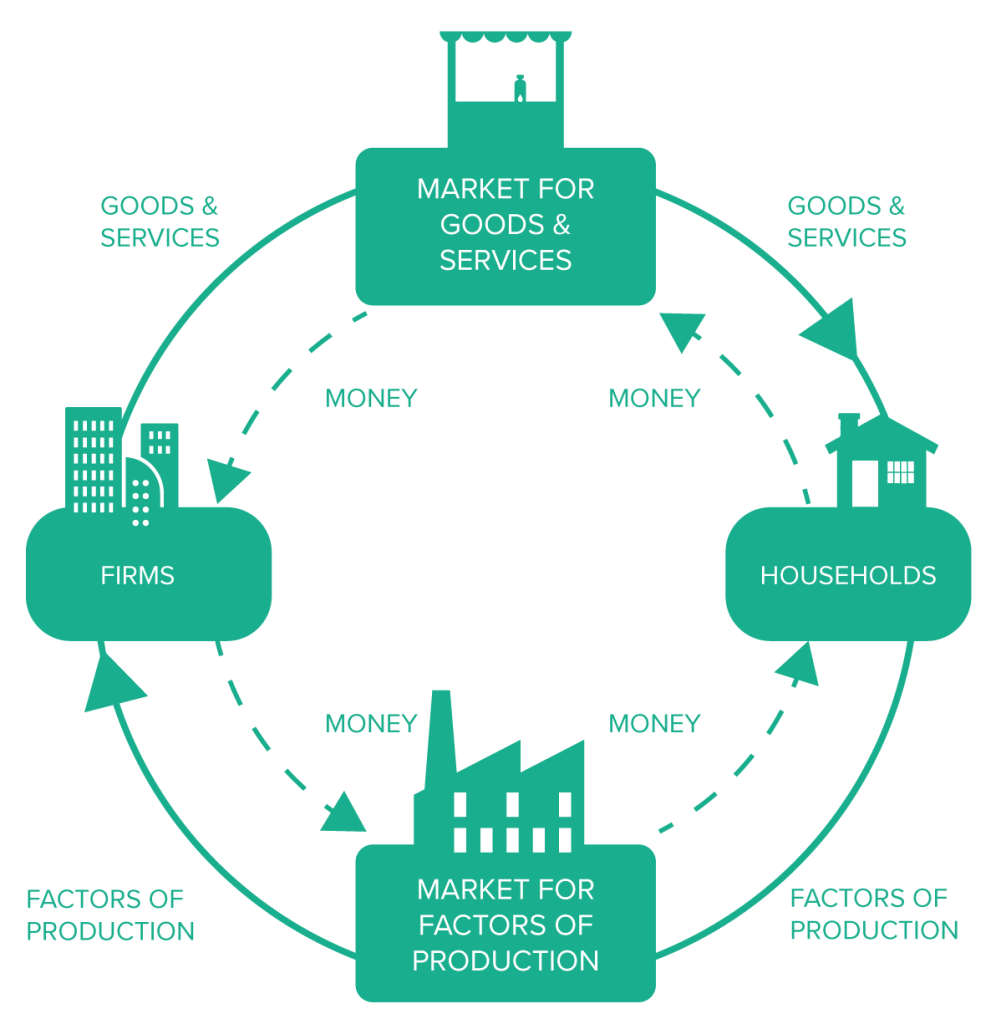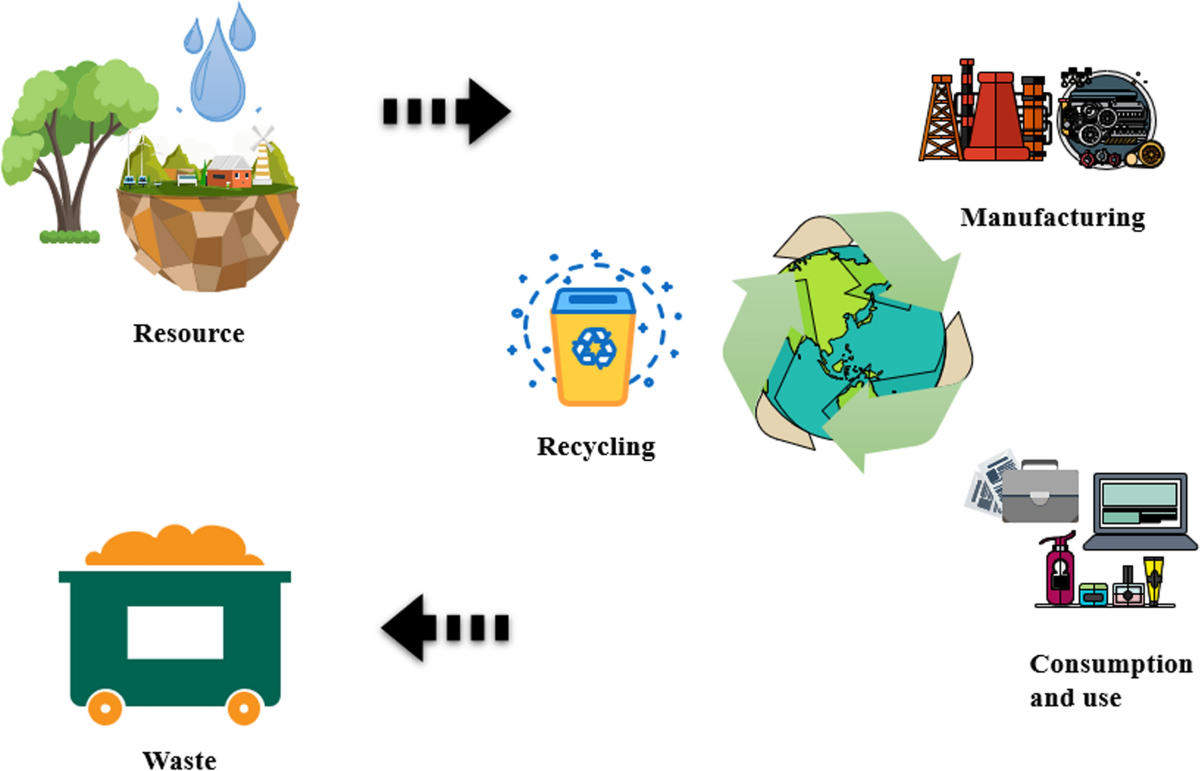How Circular Economy Practices Can Help Cut Down Ecosystem Pollution
Climate change researcher promoting global sustainability initiatives.

Climate change researcher promoting global sustainability initiatives.

Our current economic model is predominantly linear. It follows a "take-make-dispose" pattern, where natural resources are extracted, transformed into products, and ultimately discarded as waste.
This linear approach places immense strain on our planet's ecosystems. It also leads to significant pollution and resource depletion.
The circular economy offers a sustainable alternative. It's a system where materials never become waste and nature is regenerated.
It emphasizes keeping products and materials in use for as long as possible, through practices like reuse, repair, and recycling. The European Union is adopting additional measures to achieve a carbon-neutral, environmentally sustainable, toxic-free and fully circular economy by 2050.

Circular practices significantly reduce waste generation. By extending product lifespans and recycling materials, we minimize the amount of waste ending up in landfills or polluting our oceans.
For example, properly managing waste can protect workers and the environment from hazardous materials. These practices can also help reduce plastic waste into the ocean by 80% in 20 years.
Resource efficiency is a cornerstone of the circular economy. By using resources more efficiently, we can significantly lower greenhouse gas emissions.
Studies show that circular use of materials can help reduce global GHG emissions by 40 percent by 2050. Circular economy strategies that reduce our use of resources can cut global greenhouse gas emissions by 39%.
The circular economy promotes the conservation of natural resources. It reduces the need for raw material extraction, which often has devastating environmental impacts.
For example, in the past two decades, material consumption has risen by over 65 percent globally. If current trends were to continue, we would need three planets by 2050.
One key strategy is designing products that last longer. This reduces the frequency of replacements and the associated environmental impacts.
Companies are increasingly adopting this approach. Designing products to be kept in use for longer reduces the amount of waste produced.
Designing products with recyclability in mind is crucial. This ensures that materials can be easily recovered and reused at the end of a product's life.
This approach is gaining traction across various industries. For example, many companies are shifting towards recycled materials, alleviating the need to produce virgin plastics.

Effective waste management is vital. Improving collection and sorting infrastructure ensures that recyclable materials are properly processed.
This prevents them from ending up in landfills. It also reduces contamination of the environment.
Organic waste can be transformed into valuable resources. Composting and anaerobic digestion are two effective methods.
These processes convert organic waste into nutrient-rich compost or biogas. The National Recycling Strategy published by the EPA is part one of a series dedicated to building a circular economy for all.
Shifting consumption patterns is essential. Sharing, leasing, and product-as-a-service models promote resource efficiency and reduce waste.
These models are gaining popularity. They offer consumers access to products without the need for ownership, especially in urban areas.
Consumers can support businesses that embrace circular practices. This includes companies that prioritize sustainability and transparency in their operations.
Many businesses are adopting circular models. They recognize the economic and environmental benefits of doing so.
Aguas Andinas, Chile's largest water utility company, transformed Santiago's wastewater treatment. They adopted a "biofactory" model.
This approach turns wastewater treatment plants into facilities that generate new resources. It also demonstrates the circular economy in action.
The revitalization of the Mapocho River has had significant positive impacts. It improved public health, enhanced biodiversity, and created new green spaces in Santiago.
This case study demonstrates the tangible benefits of circular economy practices. It is a good example of how restoring a river ecosystem can benefit human health and economics.

Many countries are implementing innovative solutions to tackle plastic waste. These initiatives focus on reducing plastic consumption, improving recycling rates, and promoting the use of alternative materials. For instance, the Philippines has enacted a bill that requires large manufacturers to limit the use of plastic packaging.
The textile industry is also embracing circularity. Companies are adopting sustainable practices, such as using recycled materials and reducing water consumption in production processes.
For example, shifting towards recycled materials would alleviate the need to produce virgin plastics and synthetic fibers. This would significantly reduce fossil fuel use and associated emissions.
One major challenge is the financial barrier to adopting circular practices. Investments in new technologies and infrastructure are often required.
However, there are opportunities to incentivize circular investments. Governments can offer tax breaks or subsidies to businesses that adopt circular models.
Collaboration is key to scaling circular solutions. Sharing knowledge and best practices across sectors can accelerate the transition.
Many organizations are working to foster this collaboration. For example, the Platform for Accelerating the Circular Economy (PACE) is bringing together businesses, governments and civil society organizations to drive change.
Policy and regulatory frameworks can sometimes hinder circular economy adoption. Outdated regulations may favor linear models.
Updating these frameworks is essential. Governments need to create policies that support and incentivize circular practices.
Public awareness plays a crucial role. Educating consumers about the benefits of circularity can drive demand for sustainable products and services.
Consumer behavior change is also vital. Encouraging responsible consumption patterns can significantly reduce waste and promote resource efficiency.
Transitioning to a circular economy is not just an option, it's a necessity. The environmental and economic benefits are clear.
We must act urgently to address the challenges and embrace the opportunities that circularity offers. For the survival and well-being of people and the planet, these statistics show us the importance of transforming the way we use and respect our finite resources.
The long-term benefits of a circular economy are immense. It can help us protect ecosystems, conserve resources, and improve human well-being.
By adopting circular practices, we can create a more sustainable and prosperous future for all. By ensuring circular economy approaches are embedded into countries' climate pledges, they can accelerate the transition to a low-carbon economy, protect the natural environment, and create green, decent, and dignified jobs as well.
Key Takeaways:
— in Sustainable Living
— in Sustainable Living
— in Renewable Energy
— in Sustainability and Carbon Offsetting
— in Eco-Innovation